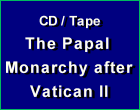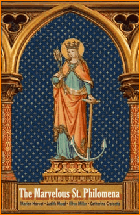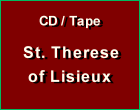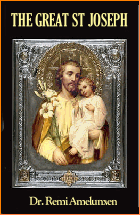Symbolism
 |
 |
 |
 |
 |
 |
 |
The Precious Medieval Symbolism of the Mass
In describing the importance of symbolism to the medieval man, Emile Mâle gives the example of how the medieval man saw the liturgy of the Mass.
The chapters which Gulielmus Durandus gives to the explanation of the Mass are among the most arresting in his Rationale. (lib. IV).
Below, for example, is his interpretation of the first part of the Divine Sacrifice.
The ceremony begins with the Introit, that solemn chant that expresses the waiting of Patriarch and Prophets. The choir of clergy is the very choir of the Saints of the Ancient Law who sigh for the coming of the Messiah whom they will never see.The chapters which Gulielmus Durandus gives to the explanation of the Mass are among the most arresting in his Rationale. (lib. IV).
Below, for example, is his interpretation of the first part of the Divine Sacrifice.
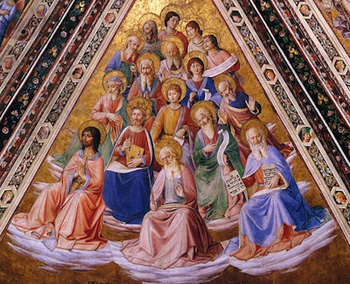
The Introit represents the waiting of the Patriarchs & Prophets for the Messiah
The Bishop advances under a triumphal canopy, whose four bearers may be compared to the four Evangelists. To right and left of him walk acolytes, typifying Moses and Elias, who were seen on Mount Tabor on either side of the transfigured Lord. They teach men that the authority of both the Law and the Prophets were embodied in Christ.
The Bishop seats himself on his throne and is silent, appearing to take no share in the first part of the ceremony. His attitude contains a lesson, for by his silence he recalls that the first years of the life of Jesus were passed in obscurity and meditation.
The sub-deacon, however, goes to the desk and, turning to the right, he reads the Epistle aloud. Here we catch a glimpse of the first act in the drama of Redemption, for the reading of the Epistle typifies the preaching of John the Baptist in the desert. He speaks before the Savior has begun His mission, but he speaks to the Jews alone, and the sub-deacon – a type of the Forerunner – turns to the north, the side of the Old Law. The reading ended, he bows to the Bishop as John the Baptist abased himself before his Master.
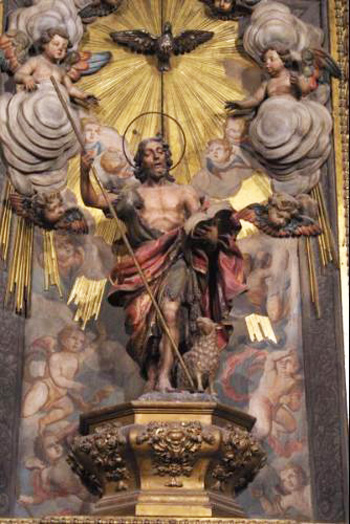
The reading of the Epistle and the Gradual are related to the mission of St. John the Baptist
At this point, the celebrant reads the Gospel. A solemn moment, for it is now that the active life of the Messiah begins, and His word is first heard in the world. The reading of the Gospel is itself the figure of Christ preaching.
The Creed follows the Gospel, as faith follows the proclamation of the truth. The 12 articles of the Creed relate to the mission of the Apostles. (Indeed, each article of the Creed was attributed to an Apostle. From the 14th century onwards, the Apostles are often shown carrying scrolls on which are written the articles attributed to each of them.)
The Creed finished, the Bishop rises and speaks to the people. In choosing this moment to instruct the faithful, the Church reminds them of the miracle of her foundation. She shows them how the truth first received by the Apostles instantly began to spread throughout the world.
Such is the mystical meaning that Gulielmus Durandus attributes to the first part of the Mass. This explanation is a kind of prologue to the drama that culminates in the Divine Sacrifice, but his comments now become so numerous and his symbolism so rich that it is impossible to give an adequate idea in a mere outline, and we would refer the reader to the original.
We have said enough, however, to give some notion of the genius of the Middle Ages, and one can divine something of the teaching, the emotional appeal and the inspiration that religious ceremonial held for the Christian of the 13th century.
How powerfully would such poetry affect the sensitive soul of a St. Louis, and how readily does it furnish the explanation of his ecstasies and tears. To those who would tear him from his meditation, he would say in a low voice, like one half-dreaming: "Where am I?" He had thought himself with St. John in the wilderness, or walking by the side of the Master.
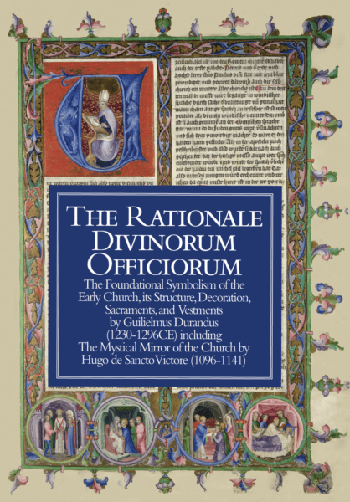
The Rationale of Gulielmus Durandus expresses the genius of the medieval man understanding liturgy
The vestments worn by the priest at the altar and the objects used in the ritual of the Church are other symbols. The chasuble, worn over the other vestments, is the charity that is above the precepts of the law and is itself the supreme law.
The stole that the priest passes around his neck is the light yoke of the Master, and as it is written that the Christian should cherish that yoke, the priest when putting it on or taking it off kisses the stole.
The Bishop's mitre with its two points symbolizes the knowledge he should have of both the Old and the New Testament, while the two ribbons attached to it are a reminder that the interpretation of Scripture should according to both letter and spirit.
The sanctus bell is the voice of the preachers. The frame to which it is suspended is a figure of the Cross, and the cord made of three twisted treads signifies the threefold interpretation of Scripture, in a historical, allegorical and moral sense. When the cord is taken in the hand in order to move the bell, it is symbolic expression of the fundamental truth that the knowledge of the Scriptures could conduce to action.
Such constant use of symbolism will astonish those unfamiliar with medieval writers. One should not, however, affect to see in it, as did the Benedictines of the 18th century, nothing but the mere play of individual fancy.
Symbolic interpretations were doubtless never accepted as dogma, but for all that it is noticeable that they seldom vary. For example, in the 13th century Gulielmus Durandus attributes the same meaning to the stole as does Amalarius in the 9th. But the interest here lies less in the interpretation itself than in the attitude of mind that it presupposes. What is significant is the scorn for practical things, and the profound conviction that, by reaching out to the immaterial through the material, man might have fleeting visions of God. And herein lies the true genius of the Middle Ages.

Emile Mâle, The Gothic Image: Religious Art in France of the 13th Century,
NY: Harper Bros, 1958, pp. 18-20.
Posted May 13, 2019
NY: Harper Bros, 1958, pp. 18-20.
Posted May 13, 2019
______________________
______________________



